![]()
![]()
![]()
Use LEFT and RIGHT arrow keys to navigate between flashcards;
Use UP and DOWN arrow keys to flip the card;
H to show hint;
A reads text to speech;
30 Cards in this Set
- Front
- Back
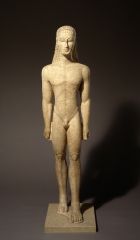
|
The “New York Kouros,”
statue from Athens, Greece, ca. 600 BC. Marble. |
|

|
The “Peplos Kore,”
statue from Athens, ca. 530 BC. Marble. |
|

|
Riace Warrior A,
statue from a shipwreck off the coast of Riace, Italy, ca. 450 BC. Bronze. Probably made in Athens |
|
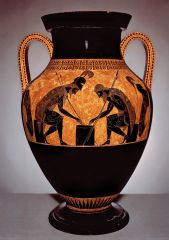
|
Exekias,
Achilles and Ajax playing dice, Athenian black-figure amphora, ca. 540 BC. Painted terracotta. |
|

|
Euthymides,
Three Revelers, Athenian red-figure amphora, ca. 510 BC. Painted terracotta. |
|
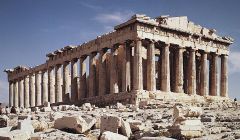
|
The Parthenon (temple of Athena Parthenos),
Athens, Greece. 447-438 BC. Marble. Architects: Iktinos and Kallikrates |
|
|
Contrapposto
|
human figure standing with most of its weight on one foot so that its shoulders and arms twist off-axis from the hips and legs
|
|
|
Naturalism
|
the attempt to represent subject matter truthfully, without artificiality and avoiding artistic conventions
|
|
|
Foreshortening
|
the visual effect or optical illusion that causes an object or distance to appear shorter than it actually is because it is angled toward the viewer
|
|
|
Lost-wax casting
|
the process by which a duplicate metal sculpture (often silver, gold, brass or bronze) is cast from an original sculpture
|
|
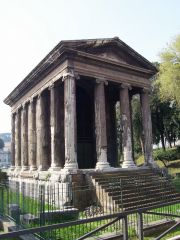
|
Temple of Portunus,
Rome, ca. 75 BC. Travertine, tufa, concrete. |
|
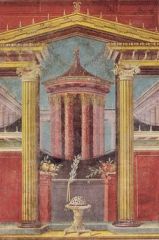
|
Second Style wall-painting from the Villa of P. Fannius Synistor,
Boscoreale, Italy, ca. 50-40 BC. Fresco. |
|
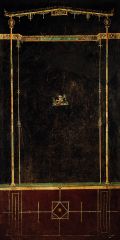
|
Detail of Third Style wall-painting from the Villa of Agrippa Postumus,
Boscotrecase, Italy, ca. 10 BC. Fresco. |
|
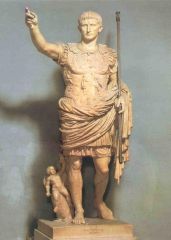
|
Portrait of Augustus as a general (the “Primaporta Augustus),
from Primaporta, Italy (near Rome), ca. 10 AD. Marble. |
|
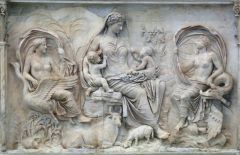
|
Female personification (probably the Earth-goddess Tellus),
relief-sculpture from the Ara Pacis, Rome, 13-9 BC. Marble. |
|
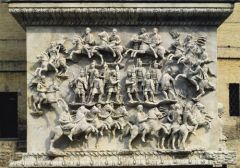
|
Decursio relief,
relief-sculpture from the pedestal of the Column of Antoninus Pius, Rome, ca. 161 AD. Marble. |
|
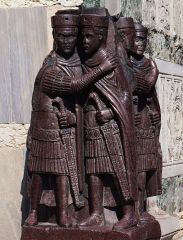
|
Portraits of the four Tetrarchs,
from Constantinople, ca. 305 AD. Porphyry. |
|
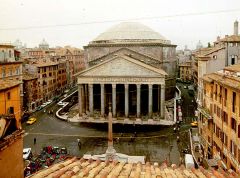
|
The Pantheon,
Rome, 118-125 AD. Concrete and marble. |
|
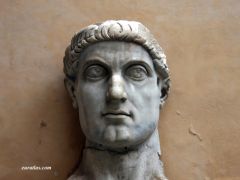
|
Colossal head of Emperor Constantine,
Rome, ca. 315 AD. Marble. |
|
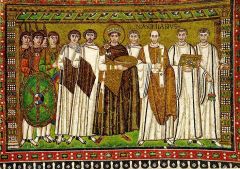
|
Apse mosaic of Justinian and Archbishop Maximian,
San Vitale, Ravenna, ca. 547 AD. |
|
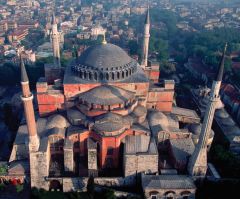
|
Hagia Sophia,
Anthemius of Tralles and Isidorus of Miletus (architects), Constantinople, 532-537 AD. |
|
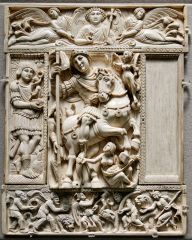
|
The Barberini Ivory, showing ‘Justinian as world conqueror,’
ca. 550 AD. |
|
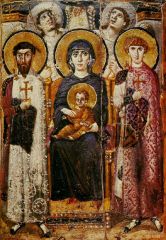
|
Icon showing the Virgin and Child between Saints Theodore and George,
ca. 600 AD, from the Monastery of St. Catherine, Egypt. Encaustic on wood. |
|

|
Cross-inscribed carpet page,
from the Lindisfarne Gospels, Northumbria, England, ca. 700 AD. Tempera on vellum. |
|
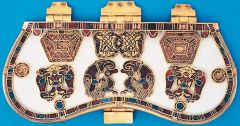
|
Purse cover,
from the Sutton Hoo ship burial in Suffolk, England, ca. 625 AD. Gold, glass and cloisonné garnets. |
|
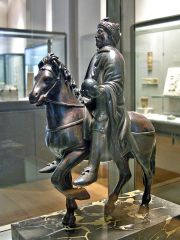
|
Equestrian portrait of Charlemagne(?),
from Metz, France. Ninth century. Bronze. |
|
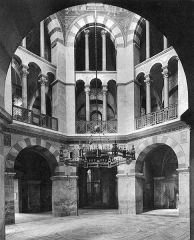
|
Palatine Chapel of Charlemagne,
Aachen, Germany, ca. 800 AD. |
|
|
pendentive
|
a constructive device permitting the placing of a circular dome over a square room
|
|
|
basilica
|
buildings with a central nave and aisles
|
|
|
apse
|
a semicircular recess covered with a hemispherical vault or semi-dome
|

